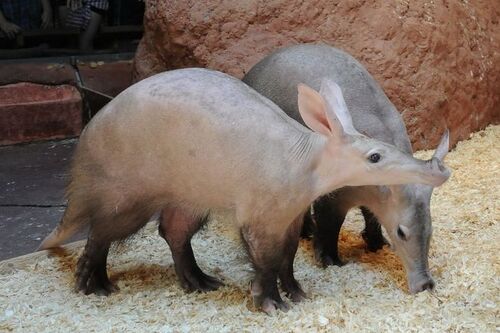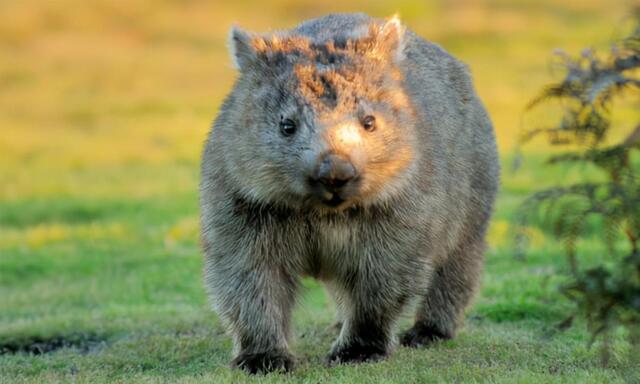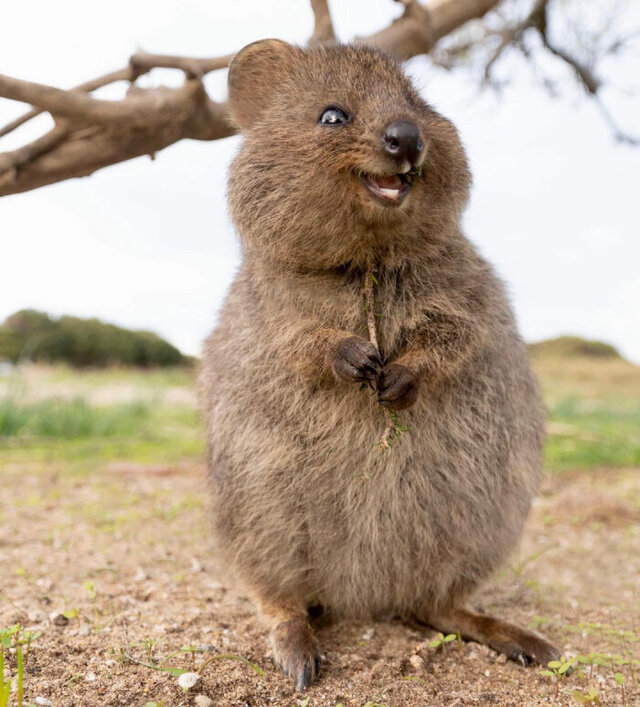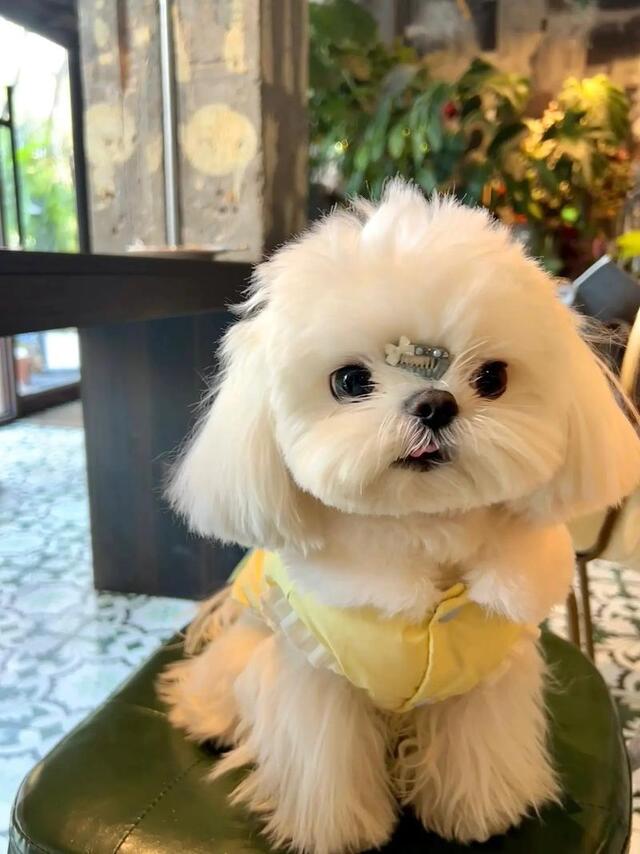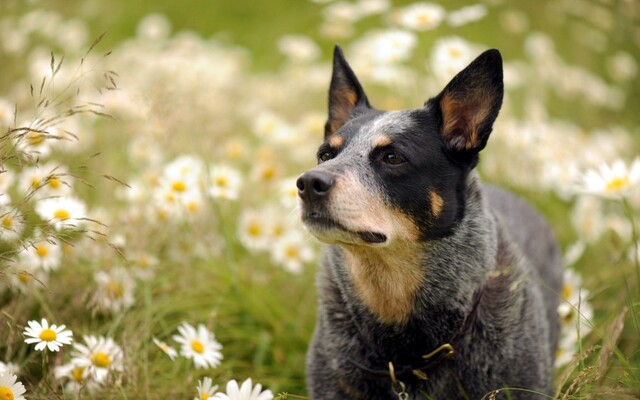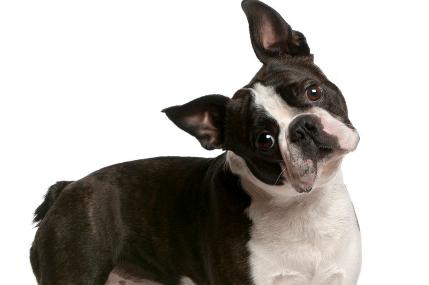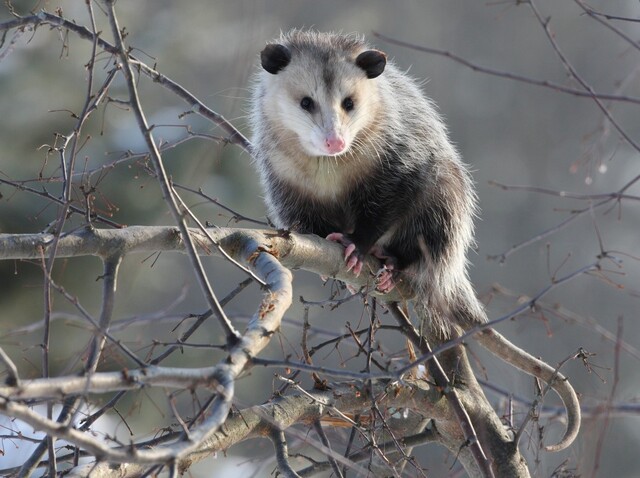vizsla
IUCN
LCBasic Information
Scientific classification
- name:vizsla
- Scientific Name:Hungarian Vizsla,Hungarian Pointing Dog, Vizsla Dog
- Outline:Rodents
- Family:Mammalia Subphylum-Vertebrata
Vital signs
- length:53-61cm
- Weight:22-30kg
- lifetime:About 13 years
Feature
Pointing dog, hunting dog, companion dog, family dog
Distribution and Habitat
Hungary
Appearance
The head is sloping and muscular, with a slightly broad skull and a center line extending forward to the forehead. The muzzle is about the same length as the skull or slightly shorter, tapering from the stop to the tip of the nose, square and deep. The eyes are medium-sized, set deep, and the color matches the coat. The ears are thin, smooth and long, with rounded ends, set low and close to the cheeks. The nostrils are slightly flared and the nose is brown in color.
Details
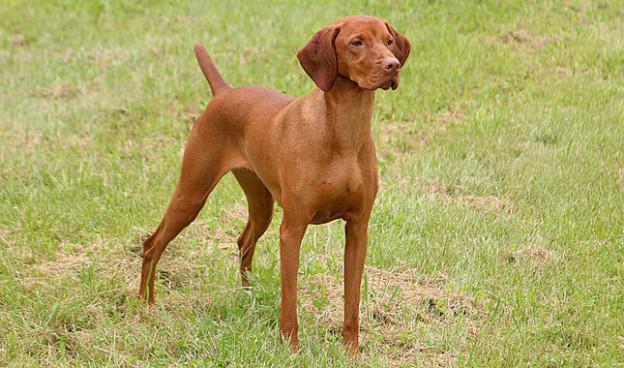
Vizsla (scientific name: Hungarian Vizsla, English name: Vizsla), also known as Hungarian Vizsla, Hungarian Pointing Hound, Hungarian Vizsla, Vizsla dog, its ancestors may have been brought to Hungary by the Magyars more than 1,000 years ago. Other dog breeds bred from Vizsla are mainly: Weimaraner, German Wirehaired Pointer and German Shorthaired Pointer. It is a beautiful and elegant hound, often called "Silver Ghost" because of its ghost-like graceful appearance and movements. Vizsla dogs originated in Hungary and were originally hunting dogs used to catch game birds. Today, they are also widely used as family pets and working dogs.
Weight: (male) 22-30kg (female) 22-30kg
Body length: (male) 56-61cm (female) 53-58cm
Origin: Hungary
Purpose: pointer, hound, companion dog, family dog
Lifespan: about 13 years
Canine IQ ranking: 25
This is a medium-sized short-haired and smooth hound with noble appearance and posture. It is better to be energetic and light in structure; the coat is an attractive golden rust, golden red or sandy yellow. This dog is very powerful and driven in the wild, but in the family, it is an easy-to-train and loving companion dog. It is important to emphasize the coat that can adapt to field work, as strong and developed muscles as possible, and scars are a symbol of honor for working dogs and hounds, and are not a defect. Its qualities make him a "double" dog, which is admirable and cannot be used as a defect.
A long and narrow face, long ears and deep brown eyes. Their body lines are very graceful and their tails are also long. The Vizsla has a very short, dense coat that is usually silver, brown or golden. It weighs between 50 and 60 pounds and is about 23 to 27 inches tall.
Hungarians who escaped Hungary before the Soviet occupation of Hungary in 1945 brought it to Australia, Italy and Germany. Some were introduced to the Czech Republic, Turkey and the southern part of the former Soviet Union.
The Vizsla was introduced to the United States in the 1950s and was registered by the American Kennel Club in 1960. As a hunting dog, the Vizsla has abundant energy and long-lasting endurance, while it is a gentle and friendly companion dog.
The Hungarian Vizsla is a very intelligent, loyal, gentle, friendly and lively dog, elegant, docile, but full of energy. The Vizsla's original two uses were as a guide hound and a retriever. In the last 20 years, it has been extended to a third use, that is, a widely praised, docile and reliable family companion dog. Their popularity in Hungary is on the rise, and their original use has not been forgotten. In Canada, the wire-haired breed is often seen as a gun dog working with hunters on weekends. They follow the trail relentlessly and pick up the prey or the thrown tennis ball conscientiously and responsibly. Very keen hounds, very good at scent and visual tracking, and can hunt efficiently in grasslands, forests and waters, notify the location and transport the prey back.
The Hungarian Vizsla is a very good hound, gets along well with other animals, is very loyal to the owner, and is very gentle to children. If the breeder has the conditions to give it enough space for exercise, this dog can also be used as a family dog. Suitable for city life, suitable for hot weather, difficult to adapt to cold climates, does not need to comb the coat frequently, and is easy to train.
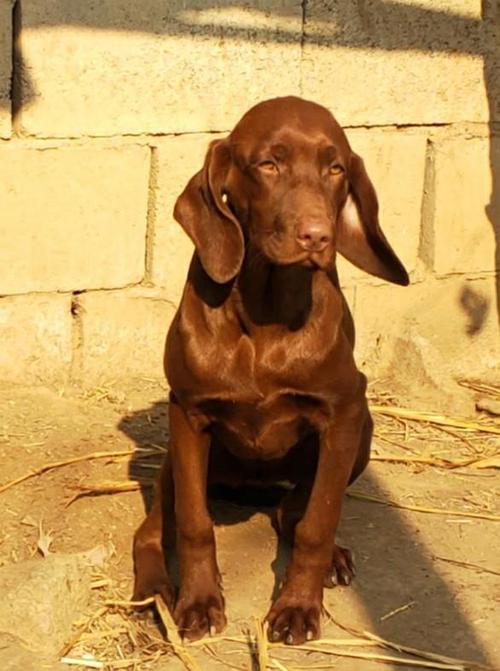
On November 25, 1960, it was certified by the AKC American Kennel Association and the FCI World Kennel Federation.
Certification standards
[Overall appearance] Elegant manners, short hair, and the coat is an eye-catching pure golden rust color. It is a powerful dog running in the wild, and a gentle and affectionate companion dog at home. Special emphasis is placed on the coat and strong, firm muscles for field conditions. Qualities in a combination dog are welcome and not objectionable.
[Head]
Sloped and muscular. Skull: Slightly broad between the ears, with the center line extending forward to the forehead. The stop between the foreface and the skull is moderate and not deep. In profile, the foreface or muzzle: Length is about the same as the skull, or slightly shorter, and the muzzle is tapered, gradually narrowing from the stop to the tip of the nose. The muzzle is square and deep. It is neither turned up to form a so-called "plate" face, nor does it slope down. Whiskers have a certain function and can be removed, but are not preferred. Nostrils: Slightly flared. The nose is brown. Any other color is a defect. A completely black nose is a disqualification. Ears: Thin, smooth and long (in proportion), with rounded ends, set low and close to the cheeks. Jaw: Strong and well-developed white teeth, scissor bite. Eyes: Medium size, deep set, surrounded by a thin white. Eye color should match coat color. Yellow or any other color is a fault. Protruding eyes are a disqualification. The lower eyelid should neither turn in nor out, as this would allow grass seeds or dust to fall into the eye. Lips: Completely cover the jaw, but neither loose nor drooping.
[Neck, Topline, Body]
Neck: Strong, smooth and muscular, of medium length, arched and free of dewlap, gradually widening towards the moderately sloping shoulders. This is necessary to balance the angular hindquarters. Body: Strong and very symmetrical. Back is short. The withers are the highest point of the topline, which is slightly arched, passing over the loin and ending at the base of the tail. The chest is moderately wide, deep, extending to the elbows. The ribs are well sprung; the underline is moderately tucked up below the loin. Tail: Set below the level of the croup, thick at the base, docked, and cut off by 1/3. The ideal length extends to the back of the stifle, and the carriage is nearly level. Undocked tail is a fault.
[Forequarters]
Shoulder blades are fairly long (in proportion) and wide, moderately sloping back, with the tips very close together. Forelegs are straight and muscular, with elbows close to the body. Feet are cat-like, round and compact, with toes close together. Nails are brown and short. Pads are thick and hard. Dewclaws, if present, must be removed (forelegs and hindlegs). Hare feet are a fault.
[Hindquarters]
Hindlegs: Thighs are well developed, with moderately angulated stifles, and hocks balanced by moderately sloping shoulder blades. When viewed from the rear, they must be very straight. Hocks that are too angulated or too shallow are faults. Hocks are low set and parallel to each other.
[Coat]
Short, smooth, dense and lying flat, without woolly undercoat. A coat that is noticeably long is a disqualification.
[Color]
Solid golden rust of varying shades. Solid dark mahogany or pale yellow is a fault. The smallest amount of white on the chest is preferred, and white on the toes is permitted. White extending above the toes, or anywhere except on the chest, is a disqualification. When he is standing naturally, viewed from the front, the white on the chest must be confined to the area between the upper breastbone and the elbow. White extending to the withers or neck is a disqualification. White hair due to old age is not a fault. Any noticeable black area in the coat is a serious fault.
[Gait]
Full reach, light footed, smooth and graceful. When he is running fast, the properly constructed dog tends to single track.
[Size]
The ideal height at the withers for males is 22 to 24 inches; the ideal height at the withers for females is 21 to 23 inches. As the Vizsla is a medium-sized hound, any deviation of more than 1.5 inches is a disqualification.
[Temperament]
A natural hound with a good sense of smell and an ability to accept training above average. Lively, gentle and well-behaved, clearly showing affection and sensitivity, and very brave, with a protective instinct. Shyness, timidity or nervousness are all faults.
[Disqualifications]
Nose completely black.
White extending above toes or anywhere except on chest.
White extending to shoulder or neck
Very long coat
Male over 25.5 inches or under 20.5 inches at withers; bitch over 24.5 inches or under 19.5 inches at withers.
Basic Grooming
Coat Standard
Coat short, smooth, dense, close to skin, with a woolly undercoat.
Breed Notes
The Vizsla is an ancient strain developed in Hungary from the Continental Panda. The Vizsla's ancestors date back thousands of years to when the Mayans migrated to Hungary, and in later years the strain adapted to the special hunting conditions of the region and evolved into the breed it is today.
The Vizsla is highly skilled in both mountain hunting and duck hunting, and is also adept at high mountain bird hunting. Since the strain was introduced to the United States, its numbers have remained stable. Today, he is a popular dog, a hunting dog, a family pet, or a beauty pageant dog.
Grooming
The Vizsla that is to be exhibited must have its beard and the odd hair on the eyes and cheeks trimmed short so that the face looks smooth and matches its golden brown hair. It should be bathed to make the hair shiny and silky soft. The ears need to be cleaned thoroughly, which is also the most important point for the judges. The toenails should be kept short so that they do not touch the ground and are clean. The hair between the toes should be trimmed, and a small tuft of hair on the tip of the short tail should also be trimmed clean and gently twisted to make it look natural.
Brush the teeth if necessary. The dog's skin is very sensitive, similar to human skin, so soap and shampoo can be used. The hair is less than 1 cm long, so grooming is easy.
Care
Since the Vizsla's hair is very short and dense, they do not require much hair care. Combing once a week is sufficient. However, you should be careful when cleaning the ears of Vizsla dogs, because their ears are drooping and cover the ear holes for a long time, so there is little ventilation and it is easy to cause bacteria to grow.
So you should clean the ears frequently. First, drop ear cleaning water into its ears, and it will shake its head by itself. Then use a clean cotton swab to clean the ear canal, repeat 1-2 times, and stop scrubbing when there is no dirt in the ears.
For older Vizsla dogs, you cannot use a dryer to dry them after bathing. It is best to use a hair dryer to dry the whole body. If there are knots in the coat, use electric clippers to deal with it, do not force it to comb it out, and always pay attention to their situation when bathing.
Training methods
Command training
Vizsla dog training includes many aspects. Here we talk about some basic training, such as "lying down" training.
Dog "lying down" training is to train the dog to lie down quickly according to the trainer's command and not to stand up without a command.
Command: "Lie down"
Gesture: Raise your right hand, palm facing back. Then stretch forward, palm facing down.
First, let the dog sit on the left side. The trainer takes a step forward, bends forward and downward, and holds food in his right hand to lure the dog. When the dog wants to get it, take the opportunity to move the food slowly forward and downward from the bottom of the dog's mouth, and at the same time give the command "lie down", and pull the leash forward and downward. When the dog lies down, give food rewards in time. With the formation of conditioned reflexes, gradually cancel the food and mechanical stimulation, and let the dog lie down with commands and gestures. Another training method is: after letting the dog sit down, the owner takes a step back and squats, holding the dog's two front limbs with both hands, and at the same time giving the command "lie down", stretching the dog's two front limbs forward, and pressing the dog's shoulder blades with the left arm. When the dog lies down correctly, give rewards immediately. When the dog has the ability to lie down, further train the dog to lie down at a certain distance from the owner, and finally to the extent that the dog cannot stand up without a command.
Fixed-point defecation
First of all, you must understand the dog's defecation habits. After birth, puppies have blocked eyes and ears, and are unable to move around easily. They cannot defecate outside the den. The mother dog will regularly lick the perineum of the puppies with her tongue and eat the feces. This is a maternal behavior.
After about 3 weeks, the puppies know how to go out of the den and defecate elsewhere. After 6 months of age, most puppies can defecate in a designated place, because it is the nature of dogs to like to defecate in the same place. Before choosing a fixed place to defecate, puppies often use their noses to sniff around. As long as they smell the smell of excrement left over from the past, they will go back to the same place to defecate.
Dogs (especially mother dogs) like to defecate in inconspicuous corners every time they defecate, and they don't want to attract attention. If they are in the garden or the wild, sometimes they will bury the feces with sand, grass or leaves. This habit is very useful for training dogs to defecate in designated places. Dogs after 8 months of age are absolutely unwilling to defecate in the place where they sleep, and they will not defecate randomly during a long sleep. They can at least endure 4-6 hours unless they are sick or have diarrhea.
But when you wake up in the morning, you will have a bowel movement within an hour. And one hour after eating, or even less than 10 minutes, the stomach will be stimulated by food and the pressure receptors will work, which can cause bowel movements.

